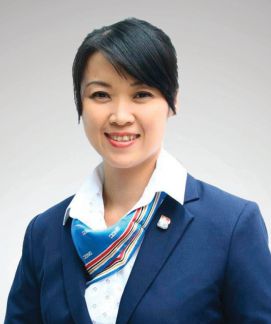A Comparison between Efficacy of Tele-Simulation-Based and Traditional Simulation-Based Training of Private Hospitals Network in Thailand
Main Article Content
Abstract
OBJECTIVES: To compare efficacy of tele-Simulation-based (online) and traditional Simulation-based (onsite) training on theoretical knowledge, practical skills and satisfied domains during the COVID-19 pandemic for The Center of Excellence (COE) of a private hospital network in Thailand.
MATERIALS AND METHODS: 951 participants completed four courses in 2020 either through traditional (694 participants) or tele-based trainings (257 participants) with complete data were included, theoretical knowledge before and after training was assessed by a standard multiplechoice questionnaire while skills were assessed once using tools developed by an expert and specialist facilitator in a private hospital network to fit COE specific learners’ performance checklist.Satisfaction was assessed by using a Likert scale questionnaire modified from the Simulation Effectiveness Tool-Modified (SET-M) of Oregon Health and Science University (OHSU).
RESULTS: The study showed most participants were female, working as nurses. 34.1% had worked for more than 7 years, and 25.5% had attended Simulation training more than 5 times. The average theoretical knowledge pre-tests and post-test scores of online training was 62.1 ± 18.9 and 82.5 ± 14.3. While the theoretical knowledge score of pre-tests and post-test of onsite training was 65.6 ± 19.0 and 79.6 ± 15.6, both were statistically significant (p < 0.0001). An evaluation of efficacies in practical skills and satistified domain in all training courses for COE either via the tele-Simulation-based training or the traditional Simulation-based training found that both methods were significantly increased. Also, the participants’ satisfied outcome towards the training course was ‘good’ to ‘very good’ in every area.
CONCLUSION: The outcome of the study showed that the efficacy of online based training was not lower than onsite training.
Article Details

This work is licensed under a Creative Commons Attribution-NonCommercial-NoDerivatives 4.0 International License.
This is an open access article distributed under the terms of the Creative Commons Attribution Licence, which permits unrestricted use, distribution, and reproduction in any medium, provided the original work is properly cited.
References
Atthirawong W. Business process re-engineering using Simulation. Business Rev J 2013;5(1): 7-24.
Rungroj C., Teetut T., Krisada C., Application of Tecnomatix Plant Simulation to improve the quality inspection process. Journal of Liberal Arts and Service Industry Vol.5 No.1 January-June2022: 383-395.
Faculty of Medicine Siriraj Hospital. SimSET [Internet]. 2021. (Accessed August 4, 2021, at https://www.si.mahidol.ac.th/ th/siriraj130years/project.php?id=6).
McCoy CE, Sayegh J, Alrabah R, et al. TeleSimulation: An innovative tool for health Professions Education. AEM Educ Train 2017;1(2):132-6. doi: 10.1002/aet2.10015
Leighton, K., Ravert, P., Mudra, V., & Macintosh, C. (2015). Updating the Simulation Effectiveness Tool: Item Modifications and Reevaluation of Psychometric Properties. Nursing education perspectives, 36(5), 317–323. https://doi. org/10.5480/15-1671
Leighton K, Ravert P, Mudra V, Macintosh C. Updating the Simulation Effectiveness Tool: Item Modifications and Reevaluation of Psychometric Properties. Nurs Educ Perspect. 2015;36(5):317-23.
Evaluating Simulation; Simulation Effectiveness Tool – Modified.USING SET-M FOR VIRTUAL SIMULATION. Copyright 2019 Leighton, K. Retrieved from https://sites. google.com/view/evaluatinghealthcareSimulation/set-m
Shin H, Kim H, Rim D, Ma H, Shon S. Validation of the Simulation Effectiveness Tool in Nursing Education. J Nurs Educ. 2020;59(4):186-93.
Lhakard P. Thailand’s administration and policies in response to the COVID-19 pandemic. Interdisciplinary Research Review. 2022;17(3):23 - 7.
Roedl C., Labour Law, and Covid-19 in Thailand. published on 2 April 2020 Retrieved from https://www.roedl.com/insights/covid-19/labour-law-and-corona-thailand
Jeanne C.,2nd Annual International TeleSimulation in Healthcare Conference: Building a Sustainable Future for TeleSimulation. Healthy Simulation.com.Oct,8 2021. Retrieved from https://www.healthySimulation.com/teleSimulation
Chen, Weichao & Jia, Jiyou. (2016). Comparison of Online and Onsite Students’ Learning Outcomes and Experiences in a Massively Open Online Course in China. The Journal of Educational Technology Development and Exchange. 9. 10.18785/jetde.0901.05.
Patel, Shivani & Miller, Christina & Schiavi, Adam & Toy, Serkan & Schwengel, Deborah. (2020). The sim must go on: adapting resident education to the COVID-19 pandemic using telesimulation. Advances in Simulation. 5. 10.1186/s41077- 020-00146-w.
Gillani, N., &Eynon, R. (2014). Communication patterns in massively open online courses. The Internet and Higher Education, 23, 18–26


